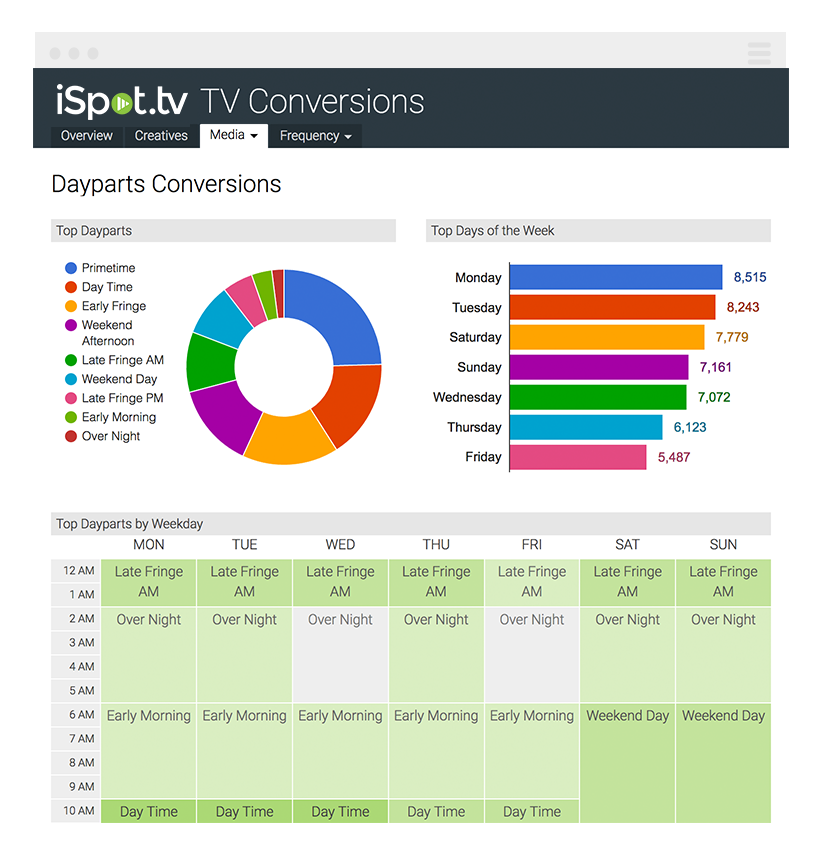Right Place At The Right Time: iSpot’s New Multitouch Attribution Platform
As upfront season approaches, there has been a great deal of talk about TV ratings, as networks who are not faring well in the Nielsen ratings (NBC) attempt to introduce their own alternative systems, networks who are doing well with Nielsen (CBS), double down on Nielsen and its new cross-device Total Audience Measurement (TAM) system, and advertisers stomp their feet, demanding something that feels like consistency.So it’s pretty much perfect timing on iSpot’s part that they are introducing their multi-touch attribution platform in the middle of all this.“Multi-touch attribution” is a fancy way of saying that because iSpot knows when and where an ad airs on a Smart TV set, it can also identify when another device in the same house does something related to the ads they just saw.iSpot’s use automatic content recognition (ACR) capabilities built into smart TV sets and combine that with data gleaned from IP addresses to understand how well specific ads did—how much traffic they actually drove, who bought something, when, where, how much and via which site or app. But also, iSpot knows what shows, day parts, and creative drove the most activity.This is particularly critical information for advertisers at a time when time shifted and device-shifted viewing is making it all that much harder to understand attribution. Life was a lot easier for ad folks when TV could only be watched live on a rabbit-ear equipped TV set. But with more people—especially people in the affluent, upscale demographic that advertisers crave—watching via connected devices at different times, finishing shows in two or three disconnected bites or multi-hour binge sessions—then better attribution is a godsend for advertisers.

Because iSpot is taking its data directly from smart TV’s, they can get a true snapshot of what the viewer is watching—the TV is platform agnostic, and so iSpot gets accurate data whether the viewer is watching via a Roku, a set top box, an antenna or an app. It’s a single point of input that only looks at what the viewer is watching—which shows and which commercials (iSpot looks at those two factors separately) and that makes for much less complicated and much more exact data.Tracking consumer purchase decisions helps answer advertiser concerns about how much of their ad spend is effective. It allows for A/B testing of creative and for more specific targeting, down to time of day and app. While many advertisers are looking for “branding” with their spots (creating a more positive feeling about the brand, rather than prompting purchase of a specific product), it’s rare that a brand does not look for both, so conversion analytics are something that most every advertiser is going to want to look at.“The days of guess-work attribution and big-money, small-panel insights are numbered. Brands need to make decisions based on behavioral data at scale,” iSpot.tv CEO Sean Muller said in a press release. “CMOs are tired of guessing audience sizes and impact of their various TV campaigns and buys. They want to know the relative conversions driven by TV the same way they can on digital platforms.” Putting TV on the same footing with digital is important, as that sort of accountability gives digital advertising a distinct advantage and true addressable is still a long way off for most TV networks. By providing attribution data, iSpot is helping to keep TV at the top of the food chain.For advertisers, anyway.PS: They have a very cool ad to announce the new service. Check it out:[embed]https://www.youtube.com/watch?v=MkcfHP-b10o&feature=youtu.be[/embed]
Putting TV on the same footing with digital is important, as that sort of accountability gives digital advertising a distinct advantage and true addressable is still a long way off for most TV networks. By providing attribution data, iSpot is helping to keep TV at the top of the food chain.For advertisers, anyway.PS: They have a very cool ad to announce the new service. Check it out:[embed]https://www.youtube.com/watch?v=MkcfHP-b10o&feature=youtu.be[/embed]